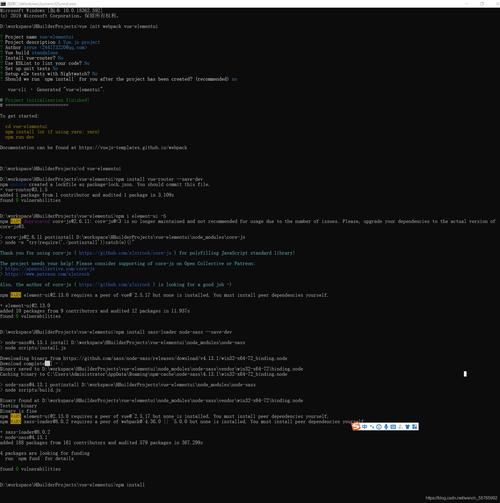
VUE 配置history路由模式配置
vue-router 默认 hash 模式 —— 使用 URL 的 hash 来模拟一个完整的 URL,于是当 URL 改变时,页面不会重新加载。
如果不想要很丑的 hash,我们可以用路由的 history 模式,这种模式充分利用 history.pushState API 来完成 URL 跳转而无须重新加载页面。
const router = new VueRouter({
mode: 'history',
routes: [...]
})
当你使用 history 模式时,URL 就像正常的 url,例如 http://yoursite.***/user/id,也好看!
不过这种模式要玩好,还需要后台配置支持。因为我们的应用是个单页客户端应用,如果后台没有正确的配置,当用户在浏览器直接访问 http://oursite.***/user/id 就会返回 404,这就不好看了。
所以呢,你要在服务端增加一个覆盖所有情况的候选资源:如果 URL 匹配不到任何静态资源,则应该返回同一个 index.html 页面,这个页面就是你 app 依赖的页面。
后端配置例子
注意:下列示例假设你在根目录服务这个应用。如果想部署到一个子目录,你需要使用 Vue CLI 的 publicPath 选项 (opens new window)和相关的 router base property (opens new window)。你还需要把下列示例中的根目录调整成为子目录 (例如用 RewriteBase /name-of-your-subfolder/ 替换掉 RewriteBase /)。
Apache
<IfModule mod_negotiation.c>
Options -MultiViews
</IfModule>
<IfModule mod_rewrite.c>
RewriteEngine On
RewriteBase /
RewriteRule ^index\.html$ - [L]
RewriteCond %{REQUEST_FILENAME} !-f
RewriteCond %{REQUEST_FILENAME} !-d
RewriteRule . /index.html [L]
</IfModule>
除了 mod_rewrite,你也可以使用 FallbackResource (opens new window)。
nginx
location / {
try_files $uri $uri/ /index.html;
}
node
#原生 Node.js
const http = require('http')
const fs = require('fs')
const httpPort = 80
http.createServer((req, res) => {
fs.readFile('index.html', 'utf-8', (err, content) => {
if (err) {
console.log('We cannot open "index.html" file.')
}
res.writeHead(200, {
'Content-Type': 'text/html; charset=utf-8'
})
res.end(content)
})
}).listen(httpPort, () => {
console.log('Server listening on: http://localhost:%s', httpPort)
})
基于 Node.js 的 Express
对于 Node.js/Express,请考虑使用 connect-history-api-fallback 中间件 (opens new window)。
Inter*** Information Services (IIS)
安装 IIS UrlRewrite(opens new window)
在你的网站根目录中创建一个 web.config 文件,内容如下:
<?xml version="1.0" encoding="UTF-8"?>
<configuration>
<system.webServer>
<rewrite>
<rules>
<rule name="Handle History Mode and custom 404/500" stopProcessing="true">
<match url="(.*)" />
<conditions logicalGrouping="MatchAll">
<add input="{REQUEST_FILENAME}" matchType="IsFile" negate="true" />
<add input="{REQUEST_FILENAME}" matchType="IsDirectory" negate="true" />
</conditions>
<action type="Rewrite" url="/" />
</rule>
</rules>
</rewrite>
</system.webServer>
</configuration>
Caddy
rewrite {
regexp .*
to {path} /
}
Firebase 主机
在你的 firebase.json 中加入:
{
"hosting": {
"public": "dist",
"rewrites": [
{
"source": "**",
"destination": "/index.html"
}
]
}
}
给个警告,因为这么做以后,你的服务器就不再返回 404 错误页面,因为对于所有路径都会返回 index.html 文件。为了避免这种情况,你应该在 Vue 应用里面覆盖所有的路由情况,然后再给出一个 404 页面。
const router = new VueRouter({
mode: 'history',
routes: [
{ path: '*', ***ponent: NotFound***ponent }
]
})
或者,如果你使用 Node.js 服务器,你可以用服务端路由匹配到来的 URL,并在没有匹配到路由的时候返回 404,以实现回退。更多详情请查阅 Vue 服务端渲染文档
proxytable
如果您在 Vue 中启用了 History 模式,并且在浏览器中访问路由时,可能会遇到找不到 chunk.xxx.js 文件的问题。
这是因为在 History 模式下,Vue Router 使用 HTML5 History API 来管理应用程序的路由。当用户在浏览器中访问应用程序的路由时,浏览器会向服务器发送请求,以获取相应的文件。如果服务器没有正确地配置路由,或者没有正确地处理路由请求,那么浏览器就会收到 404 错误,无法加载相应的 chunk 文件。
为了解决这个问题,您需要确保您的服务器正确地处理路由请求,并正确地返回相应的文件。如果您正在使用 webpack 打包您的应用程序,那么您需要确保在 webpack 配置中设置了正确的 publicPath 选项。publicPath 选项指定了 webpack 在打包时生成的文件的 URL 前缀,以便浏览器可以正确地加载这些文件。
例如,如果您的应用程序部署在根目录下,那么您可以将 publicPath 设置为:
module.exports = {
// ...
output: {
publicPath: '/',
// ...
},
// ...
}
如果您的应用程序部署在子目录下,例如 /my-app/,那么您需要将 publicPath 设置为该子目录的路径:
module.exports = {
// ...
output: {
publicPath: '/my-app/',
// ...
},
// ...
}
需要注意的是,在设置 publicPath 选项时,您需要将其设置为实际部署应用程序的 URL 路径。如果您在开发环境下使用了代理服务器(ProxyTable),那么您需要在代理服务器上设置正确的重写规则,以确保请求被正确地转发到您的应用程序。


